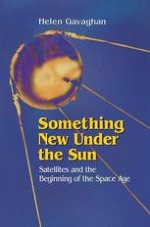1998 | Buch
Über dieses Buch
In this, the first history of artifical satellites and their uses, Helen Gavaghan shows how the idea of putting an object in orbit around the earth changed from science fiction to indespensible technology in the twinkling of an eye. Thanks to satellites, we can now send data and images anywhere in the world in an instant. The satellite-based navigational system can pinpoint your exact location anywhere in the world; it is so precise that, from outer space, it can detect the sag on an airplane's wing. Focusing on three major areas of development - navigational satellites, communications, and weather observation and forecasting - Gavaghan tells the remarkable inside story of how obscure men and women, often laboring under strict secrecy, made the extraordinary scientific and technological discoveries needed to make these miracles happen. Written by a science journalist with support from the Sloane Foundation, the book describes the birth of the modern scientific era in the twentieth century, with creation of satellite technology. The narrative is part history - beginning with the Russian-U.S. contest with the launch of Sputnik; part politics, as scientists and visionary engineers compete for scarce funding that will bring their dreams to reality; partly the story of the singular and fascinating individuals who were present at the creation of our modern technological era.
Anzeige
